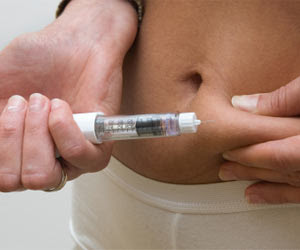Prostate Cancer
Prostate cancer is a form of cancer that develops in the prostate, a gland in the male reproductive system. Most prostate cancers are slow growing; however, there are cases of aggressive prostate cancers. It is the most common cancer found in American men after skin cancer.
Tests for Prostate Cancer
Screenings for healthy men may include both a digital rectal exam (DRE) and a prostate specific antigen (PSA) blood test. The American Cancer Society advises men to talk with a doctor about the risks and limitations of PSA screening as well as its possible benefits. Discussions should begin at:
50 for average-risk men
45 for men at high risk. This includes African-Americans.
40 for men with a strong family history of prostate cancer.
The American Urological Association recommends a first-time PSA test at age 40, with follow-ups per doctor's orders.
Testicular Cancer
Testicular cancer is cancer that develops in the testicles, a part of the male reproductive system. In the United States, between 7,500 and 8,000 diagnoses of testicular cancer are made each year. In the UK, approximately 2,000 men are diagnosed each year. Over his lifetime, a man's risk of testicular cancer is roughly 1 in 250 (0.4%). It is the most common cancer in males aged 20–39 years, the period of peak incidence, and is rarely seen before the age of 15 years.
Colorectal Cancer
Colorectal cancer, less formally known as bowel cancer, is acancer characterized by neoplasia in the colon, rectum, or vermiform appendix.[citation needed] Colorectal cancer is clinically distinct fromanal cancer, which affects the anus. Colorectal cancers start in the lining of the bowel. If left untreated, it can grow into the muscle layers underneath, and then through the bowel wall. Most begin as a small growth on the bowel wall: acolorectal polyp or adenoma. These mushroom-shaped growths are usually benign, but some develop into cancer over time. Localized bowel cancer is usually diagnosed through colonoscopy.
Skin Cancer
Skin neoplasms are skin growths with differing causes and varying degrees of malignancy. The three most common malignant skin cancers are basal cell cancer, squamous cell cancer, and melanoma, each of which is named after the type of skin cell from which it arises. Skin cancer generally develops in the epidermis (the outermost layer of skin), so a tumor can usually be seen. This means that it is often possible to detect skin cancers at an early stage. Unlike many other cancers, including those originating in the lung, pancreas, and stomach, only a small minority of those affected will actually die of the disease, though it can be disfiguring. Melanoma survival rates are poorer than for non-melanoma skin cancer, although when melanoma is diagnosed at an early stage, treatment is easier and more people survive.
High Blood Pressure (Hypertension)
Hypertension (HTN) or high blood pressure is a cardiac chronicmedical condition in which the systemic arterial blood pressure is elevated. It is the opposite of hypotension. Hypertension is classified as either primary (essential) hypertension or secondary hypertension; About 90–95% of cases are categorized as "primary hypertension," which means high blood pressure with no obvious medical cause. The remaining 5–10% of cases (Secondary hypertension) are caused by other conditions that affect the kidneys, arteries, heart or endocrine system.
Persistent hypertension is one of the risk factors for stroke, myocardial infarction, heart failure and arterial aneurysm, and is a leading cause ofchronic kidney failure.[3] Moderate elevation of arterial blood pressure leads to shortened life expectancy.
Cholesterol Levels
A high level of LDL cholesterol in the blood causes sticky plaque to build up in the walls of your arteries (seen here in orange). This increases your risk of heart disease. Atherosclerosis – hardening and narrowing of the arteries — can progress without symptoms for many years. Over time it can lead to heart attack and stroke. Lifestyle changes and medications can reduce this "bad" cholesterol and lower your risk of cardiovascular disease.
The fasting blood lipid panel is a blood test that tells you your levels of total cholesterol, LDL "bad" cholesterol, HDL "good" cholesterol, and triglycerides (blood fat). The results tell you and your doctor a lot about what you need to do to reduce your risk of heart disease, stroke, and diabetes. Men 20 years and older should have a new panel done at least every five years. Starting at 35, men need regular cholesterol testing.
Type 2 Diabetes
Diabetes mellitus type 2 – formerly non-insulin-dependent diabetes mellitus (NIDDM) or adult-onset diabetes – is a metabolic disorder that is characterized by high blood glucose in the context ofinsulin resistance and relative insulin deficiency. Diabetes is often initially managed by increasing exercise and dietary modification. If the condition progresses, medications may be needed. Unlike type 1 diabetes, there is very little tendency toward ketoacidosis though it is not unheard of. One effect that can occur is nonketonic hyperglycemia. Long-term complications from high blood sugar can include increased risk of heart attacks, strokes, amputation, and kidney failure. For extreme cases, circulation of limbs is affected, potentially requiring amputation. Loss of hearing, eyesight, and cognitive ability has also been linked to this condition. One-third of Americans with diabetes don't know they have it.
Human Immunodeficiency Virus (HIV)
Human immunodeficiency virus (HIV) is a lentivirus (a member of the retrovirus family) that causes acquired immunodeficiency syndrome(AIDS), a condition in humans in which progressive failure of the immune system allows life-threatening opportunistic infections and cancers to thrive. Infection with HIV occurs by the transfer of blood,semen, vaginal fluid, pre-ejaculate, or breast milk. Within these bodily fluids, HIV is present as both free virus particles and virus within infected immune cells. The four major routes of transmission are unsafe sex, contaminated needles, breast milk, and transmission from an infected mother to her baby at birth (perinatal transmission). Screening of blood products for HIV has largely eliminated transmission through blood transfusions or infected blood products in the developed world.
Glaucoma
Glaucoma is an eye disorder in which the optic nerve suffers damage, permanently damaging vision in the affected eye(s) and progressing to complete blindness if untreated. It is often, but not always, associated with increased pressure of the fluid in the eye (aqueous humour).[1] The term 'ocular hypertension' is used for cases having constantly raisedintraocular pressure (IOP) without any associated optic nerve damage. Conversely, the term 'normal' or 'low tension glaucoma' is suggested for the typical visual field defects when associated with a normal or low IOP.
Glaucoma Screening
Eye tests for glaucoma are based on age and personal risk:
Under 40: Every 2-4 years
40-54: Every 1-3 years
55-64: Every 1-2 years
65 up: Every 6-12 months
Talk with a doctor about earlier, more frequent screening, if you fall in a high risk group: those with a family history of glaucoma, previous eye injury, or use of steroid medications.
Bone density test
Bone density (or bone mineral density) is a medical term referring to the amount of matter per cubic centimeter of bones. Bone density (or BMD) is used in clinical medicine as an indirect indicator of osteoporosis and fracture risk. A bone mineral density (BMD) test measures how much calcium and other types of minerals are present in a section of your bone. Your health care provider uses this test, along with other risk factors, to predict your risk of bone fractures in the future and detect osteoporosis. Bone fracture risk is highest in people with osteoporosis.










No comments:
Post a Comment